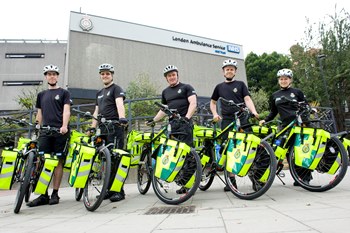As part of the NHS in the United Kingdom, the ambulance service is the emergency response arm which transports patients and responds to accidents and emergencies where they happen. Within the ambulance service there are two main functions; the emergency paramedical service (responding to emergencies where medical care is required there and then) and the patient transport service (taking patients to and from hospital.)

The ambulance service in the UK can be traced back as far as 1897 with services such as the Metropolitan Asylum Board in London. With the formation of the National Health Service (NHS) in 1948, it became a public duty to provide ambulances for those that needed them. however, between then and now, the ambulance service has gone through many changes.
For example, in light of technological advances, in 2001 the government began a four-year process of reforming the ambulance service. This saw improvements in response times and the use of new technology such as satellite navigation. The reform of emergency care also saw a funding of increase of frontline staff and vehicles. 2006 also saw significant changes with the number of ambulance trusts in England being reduced from 31 to 13 (and more recently reduced to 10).
A typical ambulance crew consists of an emergency care assistant and a paramedic. These crews are trained to be able to deal with virtually any type of healthcare emergency, including, cardiac arrest, and road traffic accidents. Typical emergency ambulances also carry a wide range of equipment such heart defibrillators, emergency oxygen, and intravenous drips.
NHS ambulances are distinctive with their high-visibility decals, although, private ambulances are not always so easily distinguishable. The one feature that denotes nearly all emergency vehicles is their emergency vehicle light. Even one of the most recent ambulance innovations, the bicycle ambulance (officially known as the Cycle Response Unit) is distinctive due to its blue lights and siren.
This new service, which operates in London, was initiated by Tom Lynch, a former competitive cyclist who joined the ambulance service at the age of 22. A formal trial of the service took place in 2000 and today the unit has a team of 60 staff. The Cycle Response Unit uses custom-built mountain bikes with London Ambulance Service livery. The rider wears London Ambulance Service livery and protective equipment and carries a comprehensive medical kit. A bicycle paramedic is said to cycle approximately 140 miles a week.